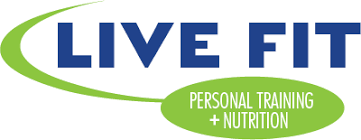Questioning The Ketogenic Diet?
What is it?
The Ketogenic, or “keto” diet is becoming a more popular approach for weight loss. Similar to the Atkins diet, a ketogenic diet is very low in carbohydrates, high in fat and moderate in protein. Some benefits that people often experience other than weight loss is increased energy, blood sugar control, healthy blood pressure, and no sugar cravings!
How it works
The order in which our bodies burn macronutrients for fuel is: carbohydrates, fat, then protein. The theory behind the ketogenic diet is that if we restrict our carbohydrate intake from food, we are forcing our bodies to burn fat.
In other words, if we deprive our body of carbohydrates (glucose), an alternative fuel is produced from stored fat called a ketone (hence, ketogenic diet). As soon as you restrict carbohydrates, your body will switch gears and burn fat. This process may take about 1 week, and you may experience the “keto-flu” symptoms. Some of these symptoms include headache, fatigue, or irritable mood. To test if you are in ketosis, you can buy keto urine strips.
What would you eat?
There is no strict distribution among macronutrients while on the ketogenic diet. The good thing about it being high in fat is that fat provides satiety (feeling of fullness). This is not a calorie restricted diet, but people experience weight loss through tricking our body to burn fat. Some people eat as little as 20 grams and as much as 50 grams of carbohydrate per day to remain in ketosis. This varies from person to person and would take time to figure out what works best for your body. People who have kidney or liver conditions should avoid this diet, always check with your doctor before starting something like this.
An example of a typical day of meals:
Breakfast: protein smoothie, or eggs with a side of avocado
Lunch: salad with dressing or avocado, or zucchini noodles with pesto and grilled salmon
Dinner: wild salmon with broccoli, kale or spinach, or hearty mushroom soup, or grass-fed beef on a low carb wrap with a lot of non-starchy roasted vegetables.
Snacks: nuts, dried cheese, jerky, or no-added sugar coconut chips.
Ketogenic diet means low carb! This means eliminating bread, pasta, fruits, added sugar – so think of your morning coffee, starchy vegetables, etc. But the good news is that after getting your body in ketosis, you won’t have cravings for sugar. The hardest part is the beginning!
Is this a forever diet?
Research supports many positive effects of this diet for the short term. However, there is not enough research currently to show positive long-term effects of this diet. This diet has not been around for a long enough period of time to know what positive effects a low carb, high fat diet consists of.
Resources
There are many apps, or websites that can be utilized during this diet to help you figure out how many carbs are in foods. Before diving right in to this diet, talk with your doctor to see if it would be appropriate for you, and maybe track your foods that you eat for a few days to get a good feel for where your carbohydrate intake is coming from. This will help you figure out what foods you will need to eliminate and what foods you can continue to eat to get your body into ketosis. Listed below are some apps and websites:
Calorieking.com, MyFitnessPal, Cron-o-meter, FatSecret, Carb Manager, The KetoDiet App
https://www.healthline.com/health/ketogenic-diet-top-iphone-android-apps
https://www.hsph.harvard.edu/nutritionsource/healthy-weight/diet-reviews/ketogenic-diet/
https://health.clevelandclinic.org/weight-loss-what-30-days-on-the-keto-diet-felt-like/
